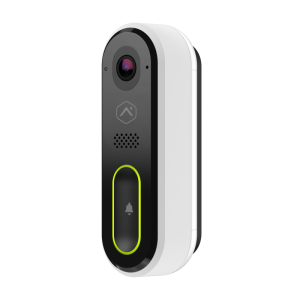Alarm.com Demand Response Program Continues Expansion, Adding New Members
Posted By Michael GorisThe Alarm.com Demand Response Program will continue expansion in the next month, as new members will join the program. Delaware Electric Co-Op, Wabash Valley Power Alliance, Duke Energy in Indiana, and Magic Valley Electric Cooperative will all be joining within a month's time from now.
If you are not familiar with the Alarm.com Give Back, Get Back Program, it is a demand response program that helps mitigate high demand for electricity during periods of peak usage, while simultaneously offering financial incentives to electric company customers. Many Alarm.com users who are also customers of participatory electric companies have used the Give Back, Get Back Program to save money, while also helping electricity providers more effectively load-balance through peak demand periods.
The way that a demand response program like the Alarm.com Give Back, Get Back Program works is that an electric company customer will give their electricity provider permission to drop or reduce electrical flow into their associated home or business at the electricity provider's discretion. In exchange, the electric provider will offer incentives to the customer, such as bill credits, reductions or discounts on their monthly bills, or even financial payments or gift cards.
Although the electricity provider can drop or reduce the electrical supply to a participating party at any time at their own discretion, the typical practice is to only do so during peak periods of the heaviest usage. For example, a user may expect the program to go into effect on a hot summer afternoon, during which all households and businesses are actively running their AC systems. Most participants do not notice any changes from such programs, and they are a great way for users to save a little bit more money on their energy bills.
In the case of the Alarm.com Give Back, Get Back Program, an Alarm.com user is giving permission to their electric company to offset power through their smart thermostat as a means of reducing strain on the grid. To participate, an individual must be an Alarm.com user who is also a customer of a participating electric company. Additionally, they must own a compatible smart thermostat device that is integrated with their Alarm.com account. The incentives for enrolling in the Alarm.com Give Back, Get Back Program vary, depending upon the user's electricity provider.
Within the next month from now, four (4) new electric companies will be joining the Alarm.com Give Back, Get Back Program. Delaware Electric Co-Op, Wabash Valley Power Alliance, and Duke Energy of Indiana will be joining the program in Mid-June, while Magic Valley Electric Cooperative (MVEC) will be joining in early July. The incentives for opting into the Alarm.com Give Back, Get Back Program are as follows:
- Delaware Electric Co-Op - Participants who enroll by September 30th will receive a $25 credit towards their electric bills, plus a $5 bill credit for each summer month in which they participate and remain enrolled in the program.
- Wabash Valley Power Alliance - Participants who join will receive a one-time $50 payment, plus a $25 ongoing seasonal credit.
- Duke Energy (Indiana) - Participants who join will receive a one-time $75 e-gift card upon enrollment, plus a $25 e-gift card for each year they participate in the program.
- MVEC - Participants will receive a one-time $50 credit upon enrolling in the program, in addition to a 10% reduction on their electric bills during the summer months on all subsequent years.
If you are a customer of any of the aforementioned electricity providers, or any other participating provider, and you are also an Alarm.com user with at least one (1) smart thermostat set up with your Alarm.com network, then you are eligible to join the program. Any user looking to get started should log in to their Alarm.com account using a compatible web browser, click on the > arrow inside the Thermostats Card, then the "Give Back, Get Back" option, and then Settings and Notifications.
If you are an Alarm Grid customer having trouble getting started, then you may email our support team at support@alarmgrid.com for further assistance. Our support hours run from 9 am to 8 pm M-F, so keep that in mind when emailing us. You may also want to contact your electric company to find out if they are a participant in the Alarm.com Give Back, Get Back Program. If they are not currently involved, then you might ask if they would ever consider getting involved sometime in the future.
Do you have any experience with the Alarm.com Give Back, Get Back Program? Has it helped you save any money on energy expenses? Or maybe you're looking to join the program in the near future? What are your expectations, and do you think it will be a worthwhile endeavor? Share your thoughts in a comment down below. We would love to hear what you have to say. Remember to stay tuned to our blog for more security and automation news coming soon!









 If you aren't familiar with Alarm.com System Enhancement Modules (SEMs), they are basically
If you aren't familiar with Alarm.com System Enhancement Modules (SEMs), they are basically 